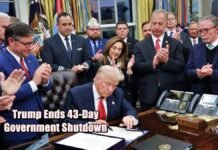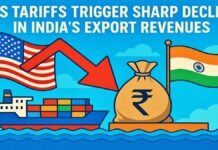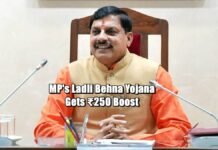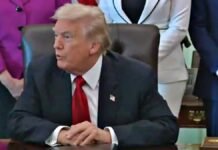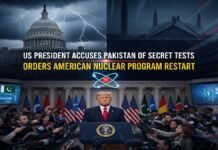
Key Points:
- Trade War Escalates: Trump imposed total 50% tariffs on Indian goods 25% baseline plus 25% penalty for Russian oil purchases, highest globally
- Strategic Targeting: US specifically targets India while sparing China, the world’s largest Russian oil importer (109 million tonnes vs India’s 88 million)
- Diplomatic Defiance: India’s Jaishankar calls US tariffs “unjustified” and tells critics “don’t buy” Indian refined products if they object
- Russia Trade Deepens: Despite US pressure, India-Russia trade hit record $68.7 billion, with New Delhi planning to expand exports to Moscow
- Congressional Push: Bipartisan US lawmakers propose 500% tariffs on nations buying Russian energy under new “Sanction Russia Act 2025”
New Delhi: Speaking on NBC’s “Meet the Press” on Sunday, Vice President JD Vance explicitly framed the punitive tariffs as part of Trump’s broader strategy to cut Russian oil revenues and force Moscow to the negotiating table. “Trump has applied aggressive economic leverage, for example secondary tariffs on India, to try to make it harder for the Russians to get rich from their oil economy,” Vance stated.
The Vice President expressed confidence that despite complications from Trump’s recent meeting with Vladimir Putin in Alaska, America can still broker peace between Russia and Ukraine, claiming both sides have made “significant concessions” in recent weeks.
Strategic Message to Moscow
Vance emphasized that Trump’s approach sends a clear message: Russia can rejoin the global economy if it stops the war, but continued isolation awaits if bombing continues. The secondary tariffs on India represent Washington’s attempt to squeeze Russian petroleum revenues, a critical funding source for Moscow’s military operations.
India-US Relations Hit New Low Over Oil Dispute
Record Tariff Burden
The Trump administration has imposed a total 50% tariff on Indian products comprising a baseline 25% tariff doubled from previous rates, plus an additional 25% penalty specifically targeting India’s Russian crude oil purchases. This represents the highest tariff rate imposed on any country globally by the current administration.
The punitive measures take full effect this week, with the additional 25% oil-related penalty kicking in just three days after Vance’s comments.
Jaishankar’s Fiery Response
External Affairs Minister S. Jaishankar delivered a sharp rebuke of US trade policy during a New Delhi event on Saturday, calling the tariffs “unjustified and unfair.” In pointed remarks, he said: “It’s funny to have people who work for a pro-business American administration accusing other people of doing business.”
Jaishankar issued a direct challenge to critics of India’s energy trade: “If anyone has an objection to buying oil or refined products from India, then they should not buy. There is no compulsion. But the truth is that both Europe and America buy from India.”
Double Standard: China Escapes Similar Pressure
Unequal Treatment Exposed
Despite China being the world’s largest Russian oil importer purchasing 109 million tonnes in 2024 compared to India’s 88 million tonnes Washington has notably refrained from imposing similar secondary tariffs on Beijing. This discrepancy has drawn sharp criticism from analysts and Indian officials.
Treasury’s Weak Justification
US Treasury Secretary Scott Bessent attempted to justify the differential treatment by claiming China’s Russian oil imports were “less problematic” because Beijing was already a significant buyer before Russia’s 2022 Ukraine invasion. However, this explanation fails to address why current purchases supporting Russia’s war economy receive different treatment based on historical precedent.
India Doubles Down on Russia Partnership
Record Trade Despite Pressure
Defying US tariffs, India-Russia bilateral trade reached an unprecedented $68.7 billion in fiscal year 2024-25, largely driven by energy imports that created a $59 billion trade deficit favoring Moscow. Rather than backing down, both nations announced plans to deepen commercial ties during Jaishankar’s recent Moscow visit.
Expanding Beyond Energy
India plans to boost exports of pharmaceuticals, agricultural products, and textiles to Russia while sending skilled workers in IT, construction, and engineering to address Russia’s labor shortages. Russian Foreign Minister Sergei Lavrov emphasized that hydrocarbon cooperation and oil supplies to India are “progressing significantly.”
Strategic Pivot Accelerates
The Modi government has used US pressure as justification to reassert its traditional relationship with Russia while simultaneously working to repair ties with China. Prime Minister Modi is reportedly planning a visit to China for potential one-on-one talks with President Xi Jinping.
Congressional Hawks Push for Broader Sanctions
Bipartisan Pressure Builds
US lawmakers from both parties are advancing the “Sanction Russia Act 2025,” which would grant Trump authority to impose tariffs up to 500% on any nation purchasing Russian oil or gas. The legislation awaits presidential endorsement but signals potential for even more severe economic measures.
This escalation suggests the India tariff dispute may be just the beginning of broader efforts to weaponize trade policy against Russian energy customers worldwide.
Geopolitical Calculations Behind Trade War
Expert Analysis Reveals Deeper Motives
Several geopolitical analysts suggest Trump’s strategy extends beyond merely limiting Russian oil revenues. The underlying agenda may focus on leveraging trading relationships to secure favorable trade deals with New Delhi while simultaneously pressuring Putin for a Ukraine ceasefire.
The timing of trade pressure coinciding with diplomatic outreach to both Putin and Ukrainian President Zelensky suggests a coordinated approach using economic coercion alongside direct negotiations.





